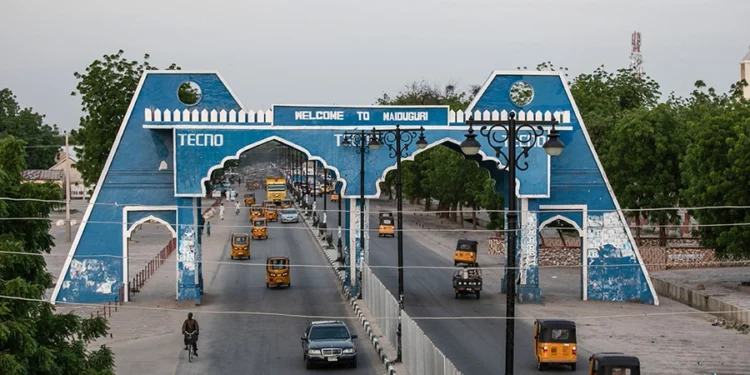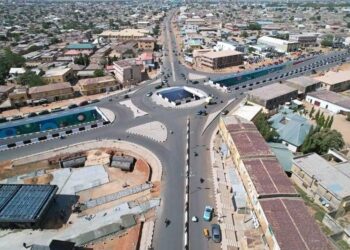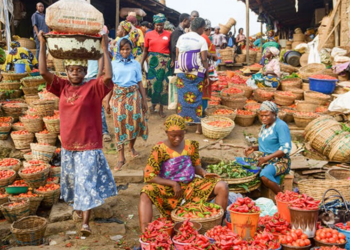Nigeria’s headline inflation rate eased to 22.22% in June 2025, down from 22.97% recorded in May 2025.
This is according to data released by the National Bureau of Statistics (NBS) on Wednesday.
The latest figure represents a 0.75 percentage point decrease, signalling a modest slowdown in the pace of rising consumer prices across the country.
The NBS, in its June 2025 Consumer Price Index (CPI) report, revealed the most expensive states to live in Nigeria based on their all-items inflation rates. The report, which measures the average change in the price of goods and services, shows inflation trends across both food and non-food items.
Below is a breakdown of the 10 highest-inflation states, according to the NBS report:
10. Ebonyi
Ebonyi recorded 23.9% in annual all-items inflation and a high 30.6% food inflation rate. On a monthly basis, food inflation rose by 7.0%, while general inflation rose by 2.4%. The state’s inflation is clearly being driven by sharp increases in food prices, particularly staples like grains, meat, and vegetables
9. Lagos
Lagos, Nigeria’s commercial hub, had a 24.0% all-items inflation rate and 21.7% food inflation. Monthly inflation climbed by 5.1%, with food prices rising at 7.0%. The rise is largely attributed to higher transportation costs, market congestion, and seasonal spikes in certain food items.
8. Imo
Imo recorded an all-items inflation rate of 24.3% and a food inflation rate of 26.9%. Month-on-month, food prices surged by 7.4% while general inflation also rose by 5.1%. The state is facing inflationary pressure from both food and non-food sources, possibly driven by rising input costs and market volatility.
7. Abia
Abia recorded a 24.6% all-items inflation rate and 25.7% for food. Prices rose by 4.6% month-on-month for all items and by 4.3% for food. The inflation in the state appears to be equally driven by both food and non-food components, suggesting that households are under pressure across multiple spending categories.
6. Plateau
Plateau recorded an all-items inflation rate of 24.7% and food inflation of 20.5%. While food prices increased by 3.4% month-on-month, general inflation declined sharply by 4.0%. This drop suggests some relief in non-food prices, possibly due to reduced demand or seasonal factors.
5. Niger
Niger State posted an all-items inflation rate of 24.7% and food inflation of 21.8% annually. However, monthly inflation dropped sharply by 5.4%, with food inflation also down by 2.8%. Despite the relief in June, the high annual figures show that inflationary trends had accumulated earlier, likely driven by cost spikes in core goods.
4. Enugu
Enugu recorded 25.6% in annual all-items inflation and 24.8% in food inflation. The state had the steepest monthly food inflation among the top ten, with food prices jumping by 11.9% and overall inflation rising by 4.0%. Enugu’s inflation is clearly food-driven, indicating seasonal shortages or supply disruptions affecting major staples.
3. Benue
Benue had a 25.9% all-items inflation rate and food inflation of 23.8%. Monthly inflation was moderate at 1.7% for all items and 3.5% for food. Although more stable than others, the persistent pressure from both food and non-food items points to sustained cost-of-living increases in the state.
2. Abuja
The capital city was the fourth most expensive state in Nigeria in May 2025. It has moved up the list as the Federal Capital Territory recorded 26.8% annual all-items inflation and 22.3% food inflation. However, month-on-month figures remained flat, with 0.0% change in overall inflation and just 0.1% for food. While June brought temporary stability, Abuja’s high annual inflation suggests that housing, energy, and urban core services have kept pressure elevated over the long term.
1. Borno
Borno consecutively topped the list with the highest inflation in the country at 31.6% for all items and an alarming 47.4% for food year-on-year.
Despite a monthly drop of 3.6% in general prices and 7.6% in food, the annual figures point to a prolonged period of food price shocks. Insecurity and disrupted agricultural supply chains are likely major contributors to the high inflation experienced by residents in the state.


























The person wey compile this list never stay delta before,